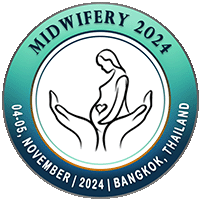
Anak Agung Ngurah Jaya Kusuma
Udayana, IndonesiaTitle: Overview of Neutrophil-to-lymphocyte Ratio and Procalcitonin Level in Preeclampsia and Non-preeclampsia Patients with Confirmed COVID-19
Abstract
Introduction: Coronavirus disease-2019
(COVID-19) is an infectious disease that is currently a pandemic. Pregnant
women are one of the populations that are susceptible to this infection because
of physiological changes during pregnancy. In a meta-analysis study, it was
shown that preeclampsia significantly occurred in pregnant patients infected
with COVID-19 compared to the group without COVID-19 infection. Inflammatory
markers that play an important role in these two diseases are neutrophil-to-lymphocyte
ratio (NLR) and procalcitonin.
Materials and methods: This research is a
descriptive study using total sampling, including all pregnant women with
COVID-19 infection at RSUP Prof. Dr. I.G.N.G. Ngoerah Hospital, Denpasar, Bali,
from April 2020 to June 2021 with a diagnosis of preeclampsia and without
preeclampsia.
Results: A total of 152 patients were found,
of which 16 patients were diagnosed with preeclampsia and 136 patients were
without preeclampsia. Most cases of COVID-19 with preeclampsia and
non-preeclampsia occurred in the maternal age range of 20–35 years. The
majority of pregnant patients with COVID-19 are asymptomatic in both
preeclampsia and non-preeclampsia. COVID-19 patients with preeclampsia each had
1 case with comorbid anemia, chronic hepatitis B, and heart failure. Meanwhile,
non-preeclampsia had the most comorbid anemia, followed by asthma, HIV, and
obesity. Pneumonia on chest X-ray is more common in non-preeclampsia patients.
Proportionally, 78.95% were in the high NLR category, while for procalcitonin
26.32% were in the high category, 15.79% were in the low category and the rest
were not examined. The NLR levels in preeclampsia and non-preeclampsia in both
low and high categories are almost the same. Procalcitonin levels tended to be
the same between the preeclampsia and non-preeclampsia groups.
Conclusion: The median NLR and procalcitonin
were almost uniform in the preeclampsia and non-preeclampsia groups, but
proportionally most of them had high NLR and procalcitonin levels. The increase
in NLR and procalcitonin in the preeclampsia group may be explained by one of
the underlying pathophysiologies of preeclampsia inflammation.
Keywords: Coronavirus disease-2019,
Neutrophil-to-lymphocyte ratio, Preeclampsia.
Biography
Dr. Anak Agung Ngurah Jaya Kusuma, Sp.OG(K)-KFM, MARS was born in
Surabaya, December 3 1961. Currently he is working as a Specialist in
Obstetrics Gynecology Consultant Fetomaternal Medicine at Sanglah General
Hospital Denpasar since 1998. Active as a Clinical Educator Lecturer at FK UNUD
, as assessor, supervisor and examiner of FK and postgraduate students,
Specialist Study Program of FK UNUD and Public Health Science Study Program of
UNUD, as Chair of the Denpasar Fetomaternal Medicine Association, as Chair of
the Fetomaternal Medicine Division, Department/KSM of Obstetrics Gynecology FK
UNUD/RSUP Sanglah Denpasar , and has served as Medical Director of Sanglah
Hospital for the period 2009-2014. Currently he is serving as Chair of the Bali
Region FKMUI Hospital Administration Masters Alumni Association, Chair of the
Sanglah Birth Defect Integrated Center (SIDIC)

